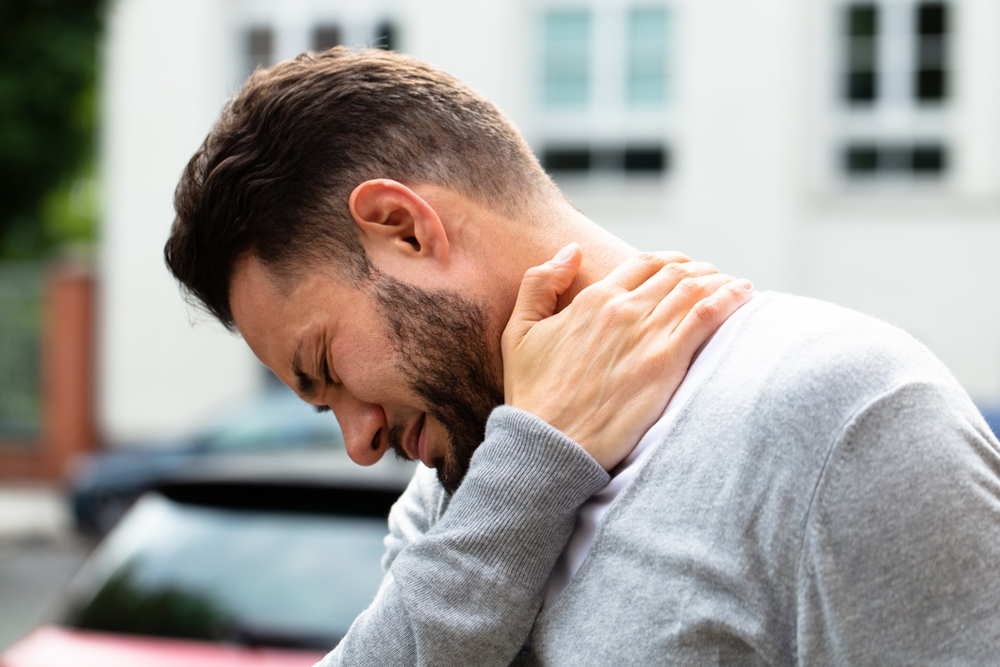
Recently, the weather is very hot. Zhang Dage in Guangzhou sleeps on the bamboo cold pillow mat with the air conditioner on at night, feeling very comfortable.
However, it was only a few days later. When I got up in the morning, I found that my neck was too painful to turn. When I went to the hospital with my neck tilted, the doctor said it was [stiff neck]. Zhang Dage was able to move his neck the next day after a physical therapy and massage. But a few days later, it recurred again.
What is the matter with this annoying stiff neck?
What is stiff neck?
We say stiff neck, also known as [lost pillow], modern medical diagnostic noun is called [acute cervical periarticular inflammation], or [neck and shoulder myofascitis], is a common soft tissue injury disease in the neck. This disease is common in young adults and is common in winter and spring.
Typical stiff neck manifestations are:
- Before going to bed, I didn’t feel any obvious discomfort in my neck. I only found obvious pain and discomfort in my back and neck when I got up in the morning. Neck movement is limited and cannot rotate freely. In serious cases, it is also difficult to bow or lean back. Even the head is stiffened at the abnormal position, causing the head to lean towards the affected side, [crooked neck]. Once the head turns to the affected side, sharp pain like knife stab will occur and can radiate to the head, neck or shoulder. The symptoms of stiff neck are mostly on one side of the neck, and there are also pain on both sides, with one focusing on the other side being light. Some people will also find that the neck and shoulder muscles on their side bulge and increase. In fact, it is only a manifestation of neck muscle spasm and stiffness.
According to typical symptoms and signs, stiff neck can be diagnosed. If the symptoms cannot be relieved for several days in a row or appear repeatedly, other diseases should be excluded: the simplest method is to take a neck X-ray, and if necessary, cervical magnetic resonance imaging is required, which can be distinguished from neck trauma, cervical spondylosis, cervical tuberculosis and other diseases.
So, why do people stiff neck?
Most stiff neck disease occurs after sleep and is closely related to sleep pillow and sleep posture. Patients will recall factors such as poor sleep position on the night before or catching cold. Keep an abnormal posture to sleep, and after a long night, the human body will slowly adapt to this abnormal posture.
Although people have adapted to uncomfortable feelings, neck muscles, fascia and ligament tissues have always been in uncomfortable positions. They will be pulled or even torn, causing swelling, congestion and even bleeding. This condition will stimulate corresponding nerve endings, produce local pain and cause neck muscle spasm.
As a result, the performance of stiff neck appeared.
Repeated stiff neck may cause cervical spondylosis prematurely.
Many people have encountered stiff neck.
Generally speaking, stiff neck can be considered as a [self-healing disease], which may only be massaged for a while or pasted with plaster, and it will take three or four days. However, if stiff neck often occurs repeatedly, such as three times, four times or more in a year, you should pay more attention.
In fact, stiff neck does not only occur during sleep. Any condition that makes neck muscles tired or suddenly injured, as well as cervical spondylosis or cervical joint disorder or chronic neck muscle strain, can cause stiff neck repeatedly.
Repeated stiff neck, in turn, may also lead to cervical spondylosis.
As one grows older, Cervical ligament, joint capsule and fascia would have appeared a certain degree of relaxation, lost the function of maintaining cervical joint stability. When stiff neck occurs, a lump of muscle in the neck is often in the state of spasm and excessive deflection, cervical vertebra will also be affected, easy to form cervical spondylosis, which is one of the main reasons for premature cervical spondylosis in young adults.
Therefore, cervical vertebra problem and stiff neck are in a vicious circle.
If your stiff neck is accompanied by upper limb pain, finger numbness, dizziness, nausea and other symptoms, you should go to the hospital for examination in time. If necessary, you need to have a neck magnetic resonance examination to determine whether you have cervical spondylosis.
How to treat stiff neck?

1. Restrictions on activities
When stiff neck, neck movement should be properly controlled. There is no need to bend, stretch or rotate the neck reluctantly. It can move to what’s range, that is, what’s range, to the extent that it does not cause or aggravate neck pain.
2. Local hot compress
Manipulation massage, drugs, hot compress, etc. can all have good therapeutic effects on stiff neck. The most convenient and commonly used treatment method is hot compress. Hot towel, hot water bag or infrared lamp can be used to carry out hot compress or irradiation on the painful part. By improving local blood circulation, tense muscles can be relaxed and pain can be relieved.
Step 3 Massage yourself carefully
Although family members can also help stiff neck patients to massage, it should be noted that [massage] is not to press indiscriminately, never to break or rotate the neck stiffly and directly, let alone to break off the noise, because once the technique of rotating the cervical spine is out of control, it will cause life danger.
Due to the aging and stenosis of cervical vertebrae, it is better not to choose massage therapy for the elderly.
Step 4 Take some painkillers
If the pain is severe, non-steroidal anti-inflammatory and analgesic oral drugs, such as fortalin and fenbid, can be selected. For patients with severe stiff neck, procaine can be injected into local pain points to block and relieve pain.
Three Unique Ways to Prevent Stiff Pillow
Step 1 Choose the right pillow
The height of the pillow should be based on the personal figure and physique. The principle is that sleeping on the pillow should be able to maintain the normal curve of the cervical spine without distorting the neck. The pillow is better with moderate hardness and slight elasticity. The pillow is too hard, and the relative pressure of head and neck contact with the pillow increases, which will cause head discomfort. If the pillow is too soft, it is difficult to maintain the normal height, making the head and neck tired without certain support.
2. Good Sleeping Position and Sleep Environment
When sleeping, one should lie on one’s back and side, and do not sleep on one’s stomach, otherwise it is easy to cause excessive torsion of cervical joints and fatigue of neck muscles. During sleep, the neck should also be pillowed on the pillow and should not be suspended.
When sleeping, the quilt should be covered not only on the body, but also on the neck. In summer, don’t blow the back of your neck directly against the fan or air conditioner for a while to avoid neck spasm caused by cold neck.
3. Exercise of Neck and Back Muscles
The muscles of the neck and back are the key to maintain the stability of the cervical spine. Therefore, to protect the cervical spine, the key is to exercise the muscles of the neck and back.
What about how?
It is best to take out a certain amount of time to exercise every day, especially pay attention to strengthening the exercise of neck and shoulder muscles. Swimming and flying kites have a better effect on preventing cervical spondylosis. Office workers who sit in front of computers for a long time should also regularly raise their heads and move their necks to prevent chronic strain of neck muscles and help reduce the risk of stiff neck.
Responsible Editor: Xiaoyan
